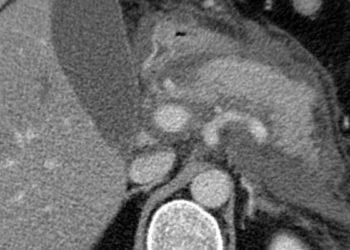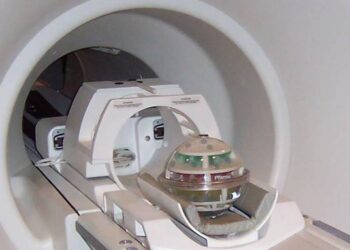Preterm birth associated with elevated plasma insulin levels
Image: CC?Wiki
1. Plasma insulin levels at birth and early childhood were found to be inversely proportional to gestational age.
2. Elevated plasma insulin levels at birth may lead to high insulin levels in early childhood.
Evidence Rating Level: 2 (Good)
Study Rundown: Ever increasing rates of diabetes, cardiovascular disease, and other mostly preventable diseases has forced countless healthcare providers to continuously counsel patients on behavioral modification. This has proved difficult in the adult population and has led scientists to shift focus to discovering early developmental factors that may play a role in future disease predisposition. The association between low birth weight and increased propensity for adult disease has been well researched. However, the association between preterm birth and such disease processes is remains cloudy. While conditions such as insulin and type 2 diabetes have been loosely linked to preterm birth, there remains a lot to learn.
This study is the first to demonstrate the inverse relationship preterm birth has on random plasma insulin levels at birth and in early childhood. A major finding of the study determined that higher than normal levels of plasma insulin in early childhood can be predicted by higher than normal plasma insulin levels at birth. A weakness of this study lies in the authors’ inability to collect fasting insulin levels from the children and instead being forced to use random insulin levels. This study should serve as the beginning of the effort to understand just how early one’s predisposition to diabetes and insulin resistance begins.
Click to read the study, published today in JAMA
Click to read an accompanying editorial in JAMA
Relevant Reading: Premature Birth and Later Insulin Resistance
In-Depth [prospective cohort]: This prospective cohort study included 1358 U.S. children from the Boston Birth Cohort. At birth, mean insulin levels were 9.2 μIU/mL for full term (95% CI, 8.4-10.0), 10.3 μIU/mL for early term (95% CI, 9.3-11.5), 13.2 μIU/mL for late preterm (95% CI, 11.8-14.8), and 18.9 μIU/mL for early preterm births (95% CI, 16.6-21.4). In early childhood, mean insulin levels were 11.2 μIU/mL for full term (95% CI, 10.3-12.0), 12.4 μIU/mL for early term (95% CI, 11.3-13.6), 13.3 μIU/mL for late preterm (95% CI, 11.9-14.8), and 14.6 μIU/mL for early preterm births (95% CI, 12.6-16.9). Early childhood was defined as the period from birth to age 6.5 years. Further, children who ranked in the top third of the group for cord blood insulin levels at birth were more likely to remain in the top third (41.2%) than were children ranked in the lowest third (28.6%) in early childhood.
More from this author: Reducing surgical complications may increase costs, Protected sleep periods improve intern alertness and sleep duration, ADHD medication decreases rates of criminality in ADHD patients, Low dose aspirin shows net clinical benefit in patients with first unprovoked venous thromboembolism, Rare TREM-2 mutation implicated in Alzheimer’s Disease
©2012-2014 2minutemedicine.com. All rights reserved. No works may be reproduced without expressed written consent from 2minutemedicine.com. Disclaimer: We present factual information directly from peer reviewed medical journals. No post should be construed as medical advice and is not intended as such by the authors, editors, staff or by 2minutemedicine.com. PLEASE SEE A HEALTHCARE PROVIDER IN YOUR AREA IF YOU SEEK MEDICAL ADVICE OF ANY SORT.









